
This older man, a Yagua, stands in the group’s main hut and displays his traditional garb and hunting weapon — a blowgun and darts. Because the men wear grass skirts, Spanish conquerors thought they were women and named the area Amazon, after the ancient female warriors.
As time marches on some people get left behind. The Yagua, today a diaspora of fewer than 6,000 people scattered in small and remote villages along the Amazon River in Peru and Colombia, are an example of how “progress” can ravage a culture unprepared to deal with a changing world.
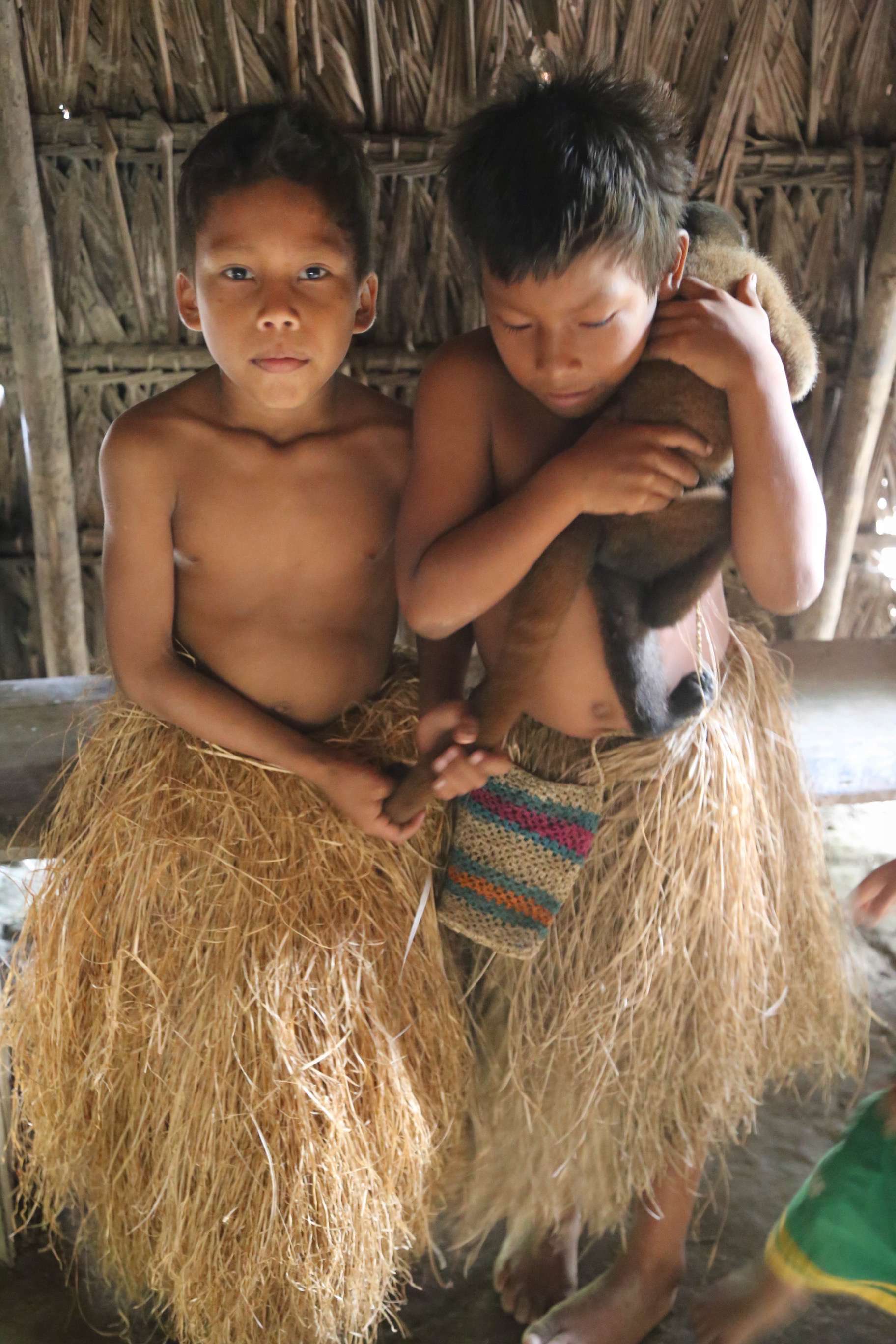
All kids like to have pets and the Yagua have monkeys, sloth and other creatures to play with.
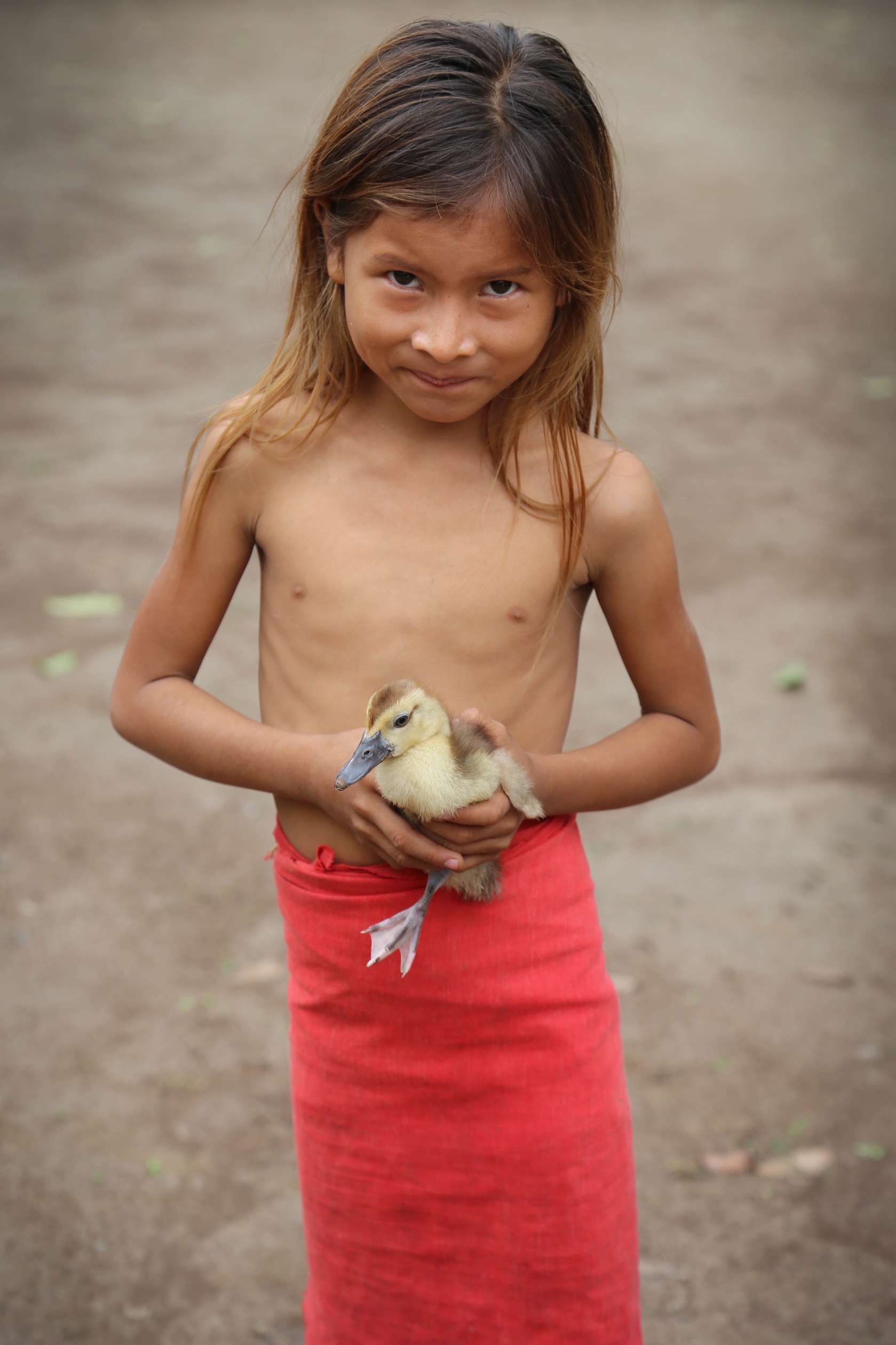
This little girl shyly shows off her baby duckling she will raise as a pet.
Yet the Yagua have a distinguished heritage and remain proud. The Amazon River was so named because early Spanish conquerors mistook the Yagua men, who wear a type of grass skirt, as women, and named the region “Amazon” after the legendary female warriors who were bitter enemies of the ancient Greeks.
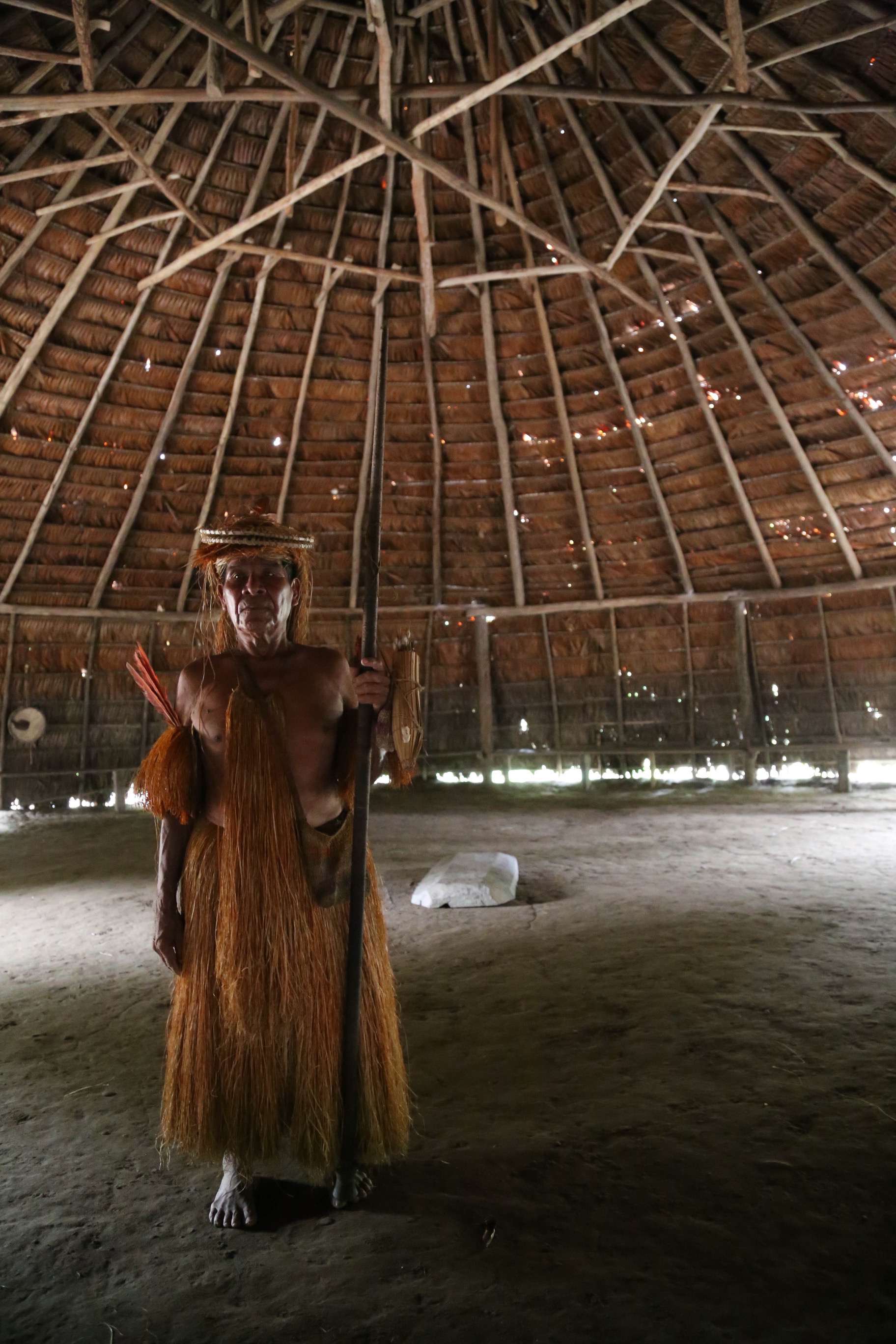
Each village of a Yagua group has a main hut where communal events are held. Families live in smaller huts scattered around the village.
And the Yagua continue to be renowned for their ability to hunt using a blowgun. They also are expert in the use of curare, a highly poisonous compound they dip in the ends of their blowgun darts. (The Yagua test the strength of a batch of curare by counting the number of hops a frog makes after its skin had been pricked by a dart dipped in the compound.)

A quiver of darts rests in its holder that dangles from a Yagua’s blowgun.

The lower jaw of a piranha is used to smooth the dart and sharpen the end.
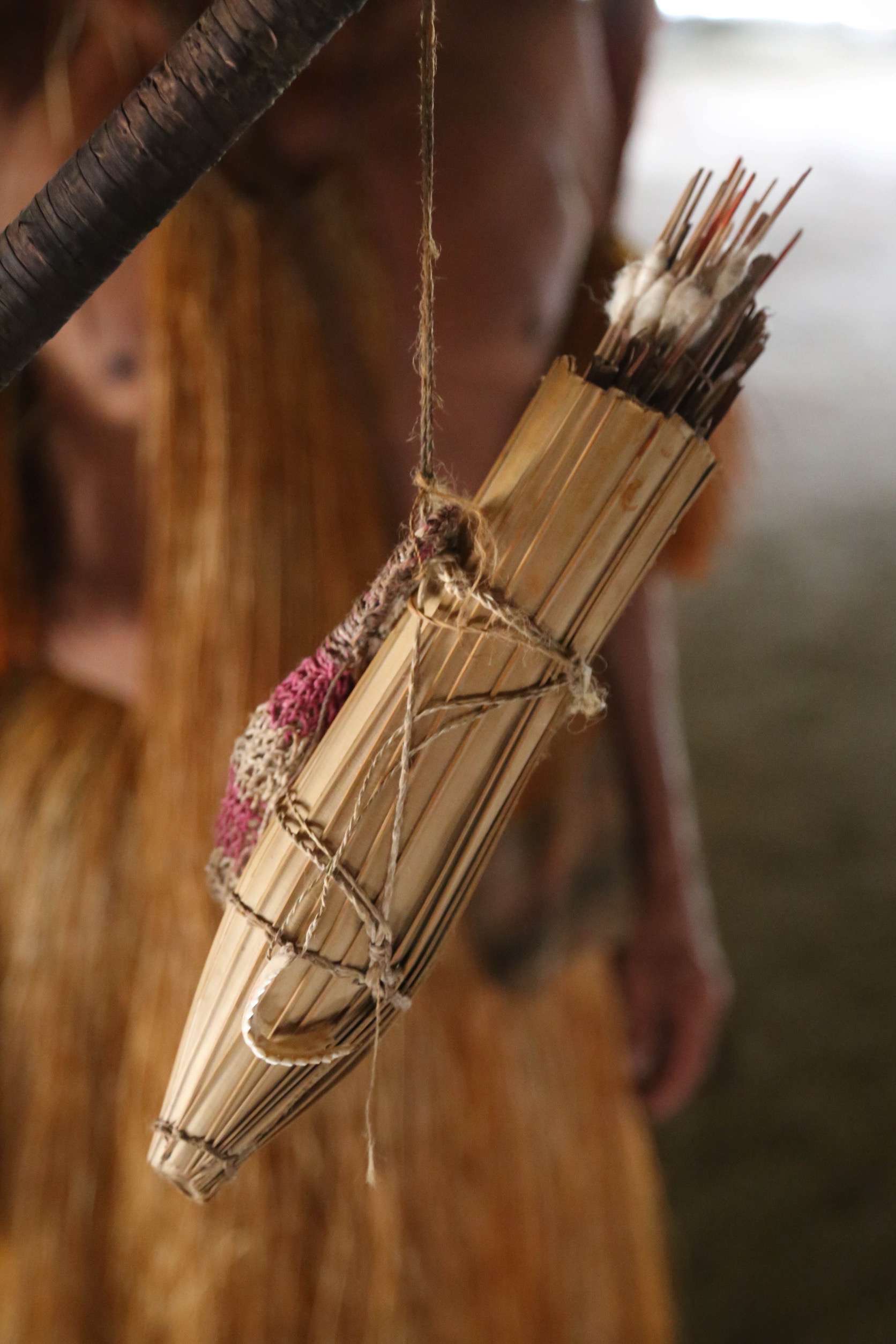
If a hunter needs to make new darts, his piranha jaw is close at hand.
The actual number of Yagua is in some dispute. Part of the reason is how far they have dispersed and another reason is that most of the remaining Yagua have located to Iquitos, Peru (to this day only accessible by air or boat), where the availability of jobs offers a chance at a modern and more prosperous life. Some have estimated less than 1,000 Yagua still live in their traditional family units in the jungle along the Amazon River. As a consequence of moving to the city, the Yagua language is dying out. For example, children are raised to speak Spanish.

This trio of Yagua men show off a “ready, aim, fire” of darts. Note the dart coming out of the end of the blowgun on the right.
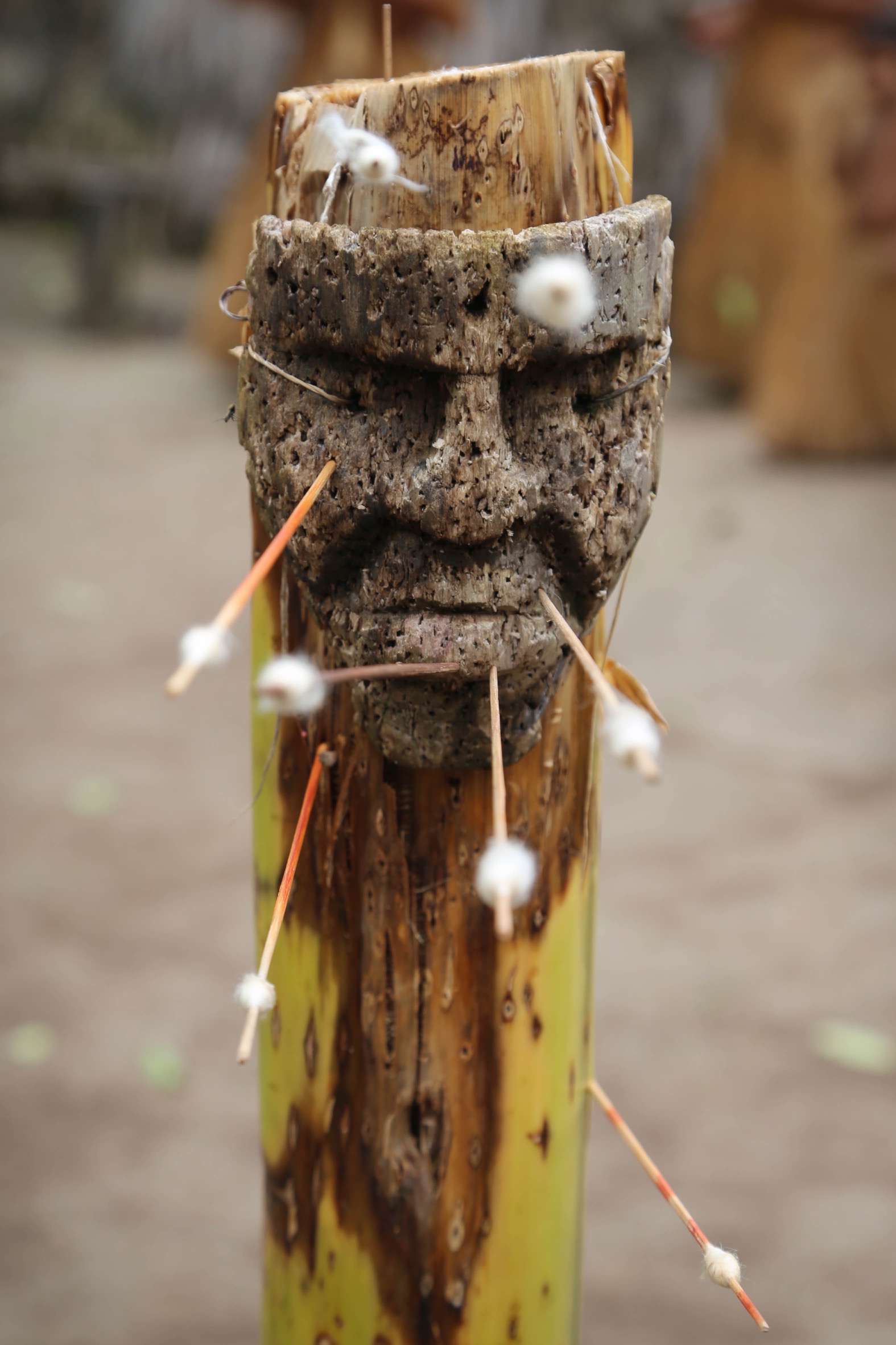
The Yagua are highly skilled in the use of the blowguns and are deadly accurate from 25 or 30 yards, or more.
Another important reason the Yagua are so widely scattered was due to the “rubber boom” of the late 1800s and early 1900s. Europeans enslaved indigenous peoples to work on the rubber plantations, but the Yagua resisted and went deeper into the jungle. Despite that, many were killed or succumbed to European diseases. This survival strategy helps explain why there are Yagua living in the Colombian region of the Amazon River.

The Yagua can easily blend into the jungle, making them difficult to see by man or beast.
Life in the Amazon jungle has always been difficult and remains so to this day. The Yagua practice rudimentary farming, and raise basic grain crops. They also harvest bananas, plantains, maize, sweet potatoes, sugarcane and pineapples, along with wild fruits from the jungle. They practice swidden agriculture where small plots are slashed and burned then farmed for a year or two before the soil is depleted. Sources of protein for the Yagua come from hunting animals such as peccaries, tapirs, small rodents, birds and monkeys. Fish from the Amazon has become a more recent source of protein.
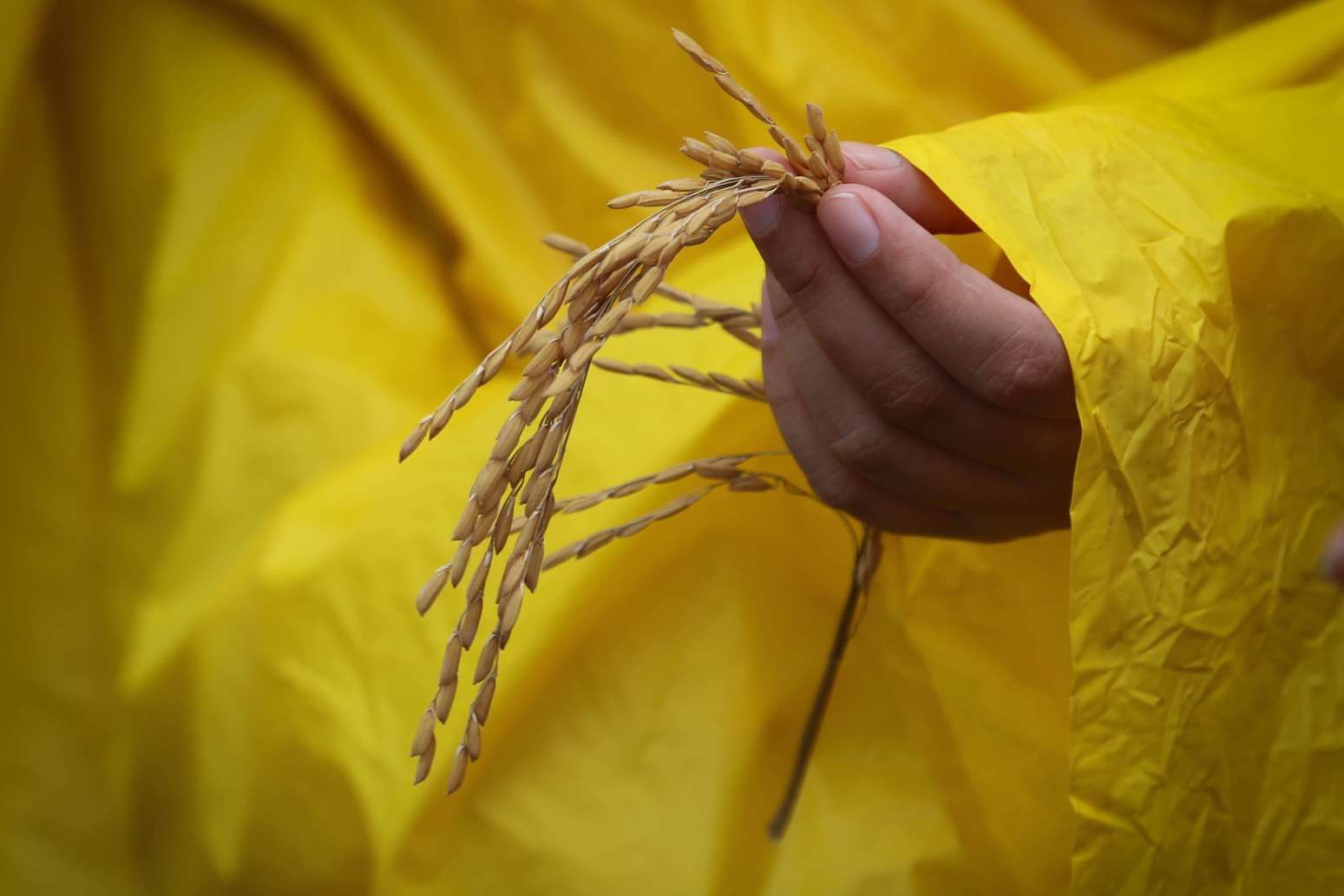
A tour guide shows some of the grain crops the Yagua grow for food.

Remnants of a recent crop of grains is still in the field.
Until recently hunting was done exclusively with blowguns. The simple, yet deadly accurate weapon is handcrafted in two parts and joined together. Great care must be taken so the bore is both true and of consistent size. Darts are made from small sticks with a soft material on one end (that acts like a gasket). The darts are smoothed and the ends sharpened using teeth from the jaw of a piranha. And while shotguns now sometimes replace blowguns as a hunting weapon, the cost of shells can be too expensive for many.
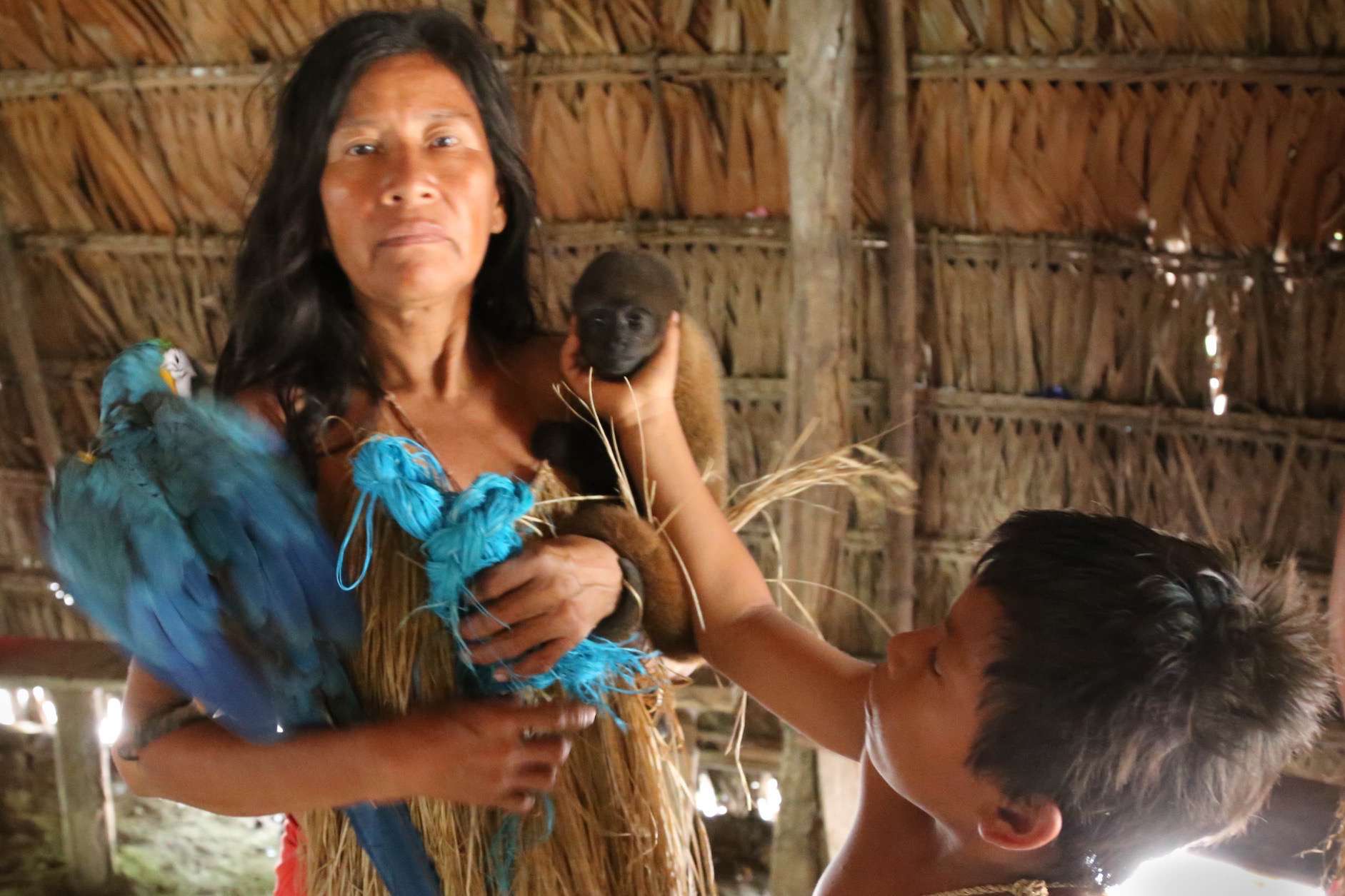
A woman holds a pet monkey and parrot while a child helps pose the monkey for a photo.
Today, many of the groups of Yagua still living in the jungle depend on income from tourists and visitors. Villagers dress in traditional garb, perform some dances in their main hut and demonstrate their proficiency with blowguns. They are accurate from 30 or 40 yards.
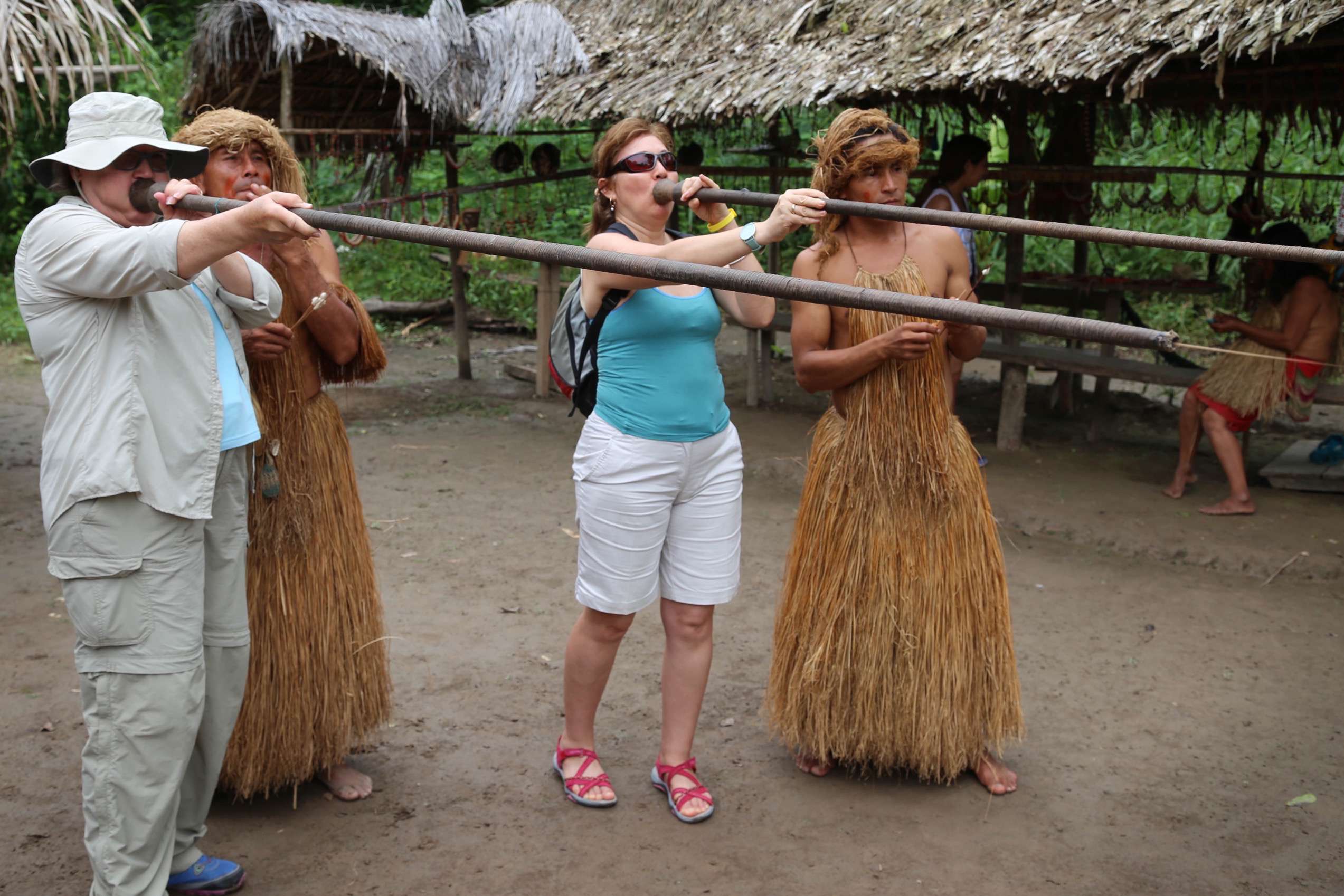
A pair of tourists try their luck with blowguns. The dart of the blowgun on the left is just leaving, on its way to the target.
A big portion of the income the Yagua earn is from the sale of trade goods and handmade crafts which visitors are only too happy to snap up. But truth be told when visitors arrive carrying digital cameras and smartphones, and the Yagua are barefoot and wearing grass skirts, it is a way of life that is difficult for younger generations of Yagua to want to cling to.
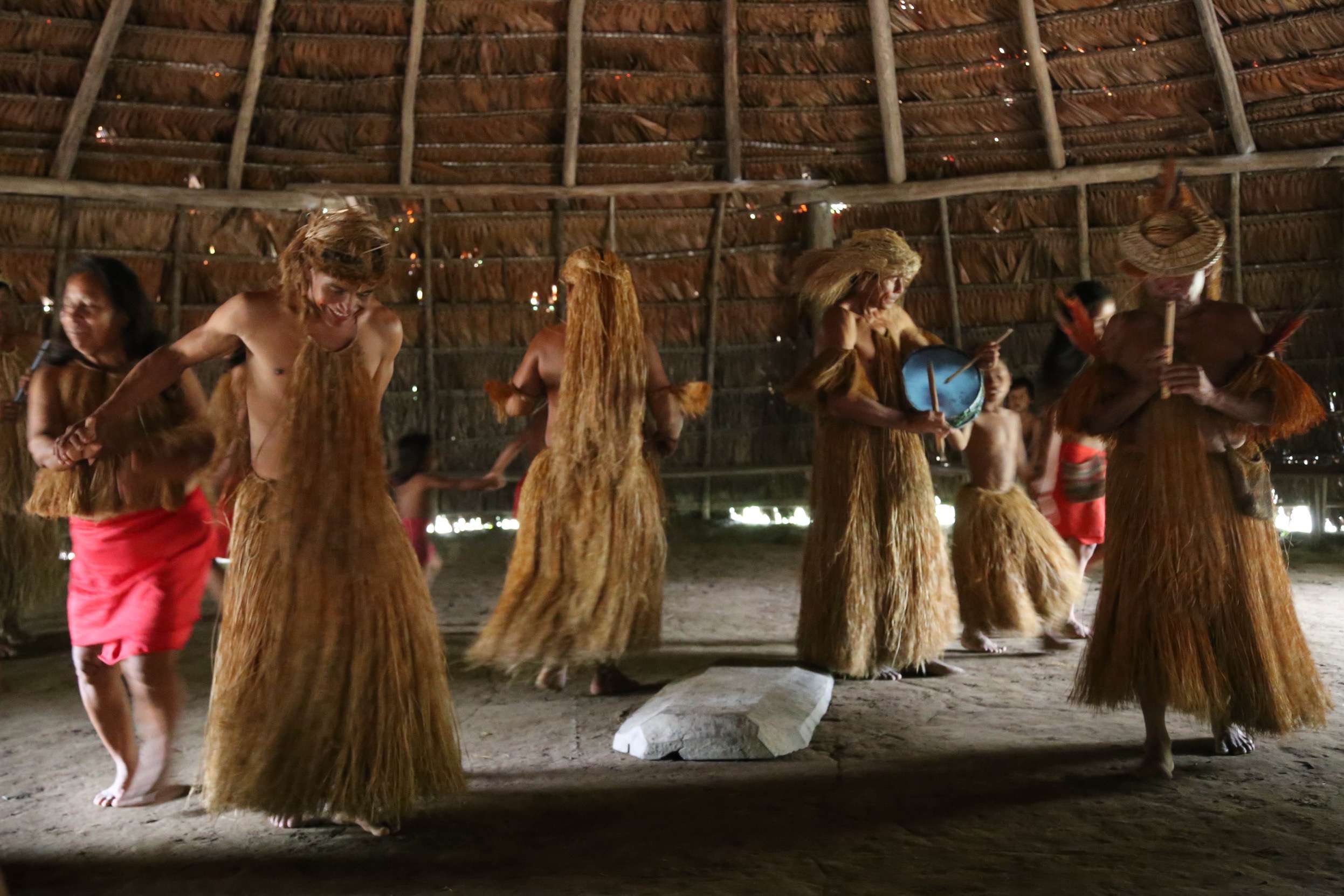
When tourists come for a visit, the members of the group gather in the main hut and perform a few dances.
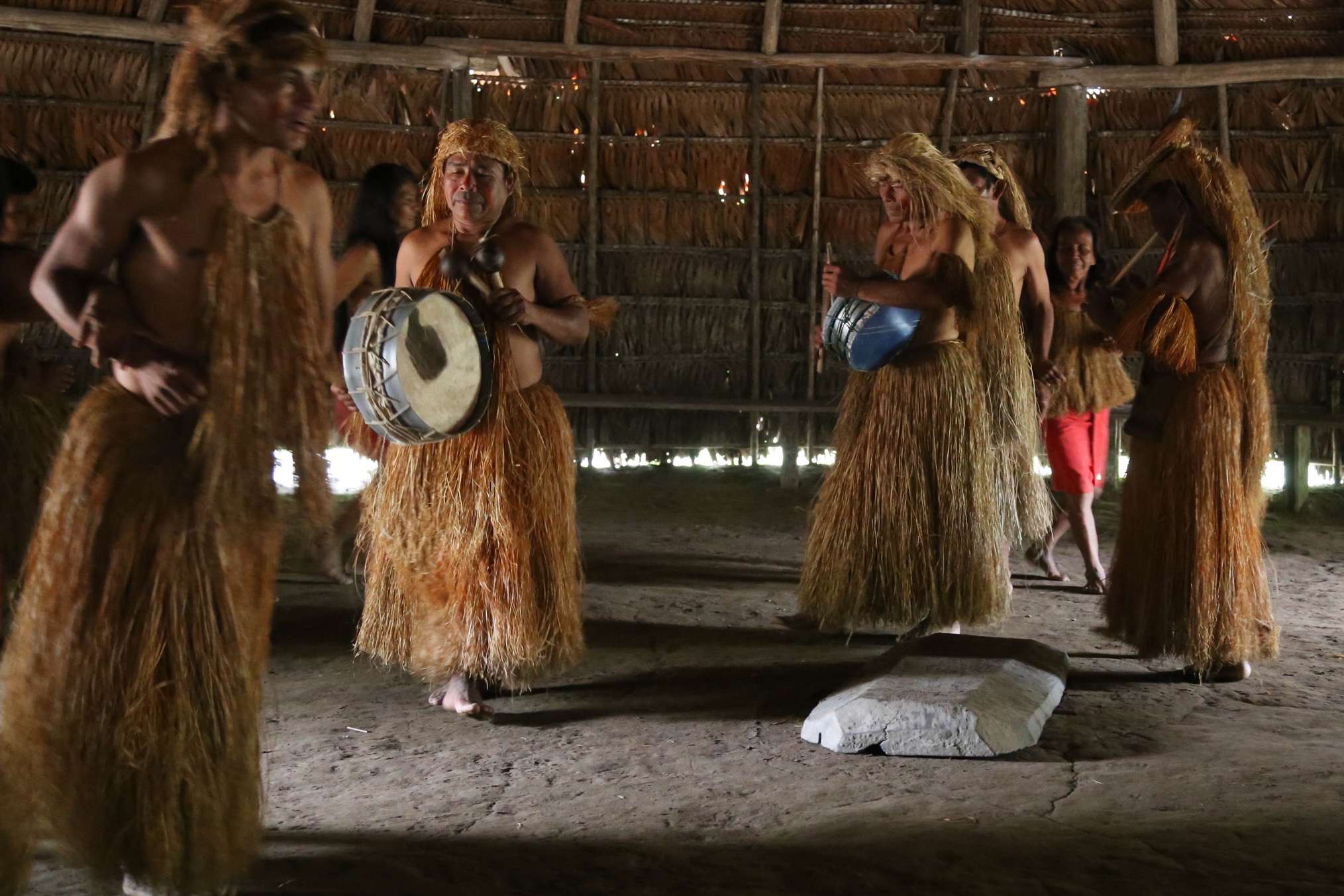
Their musical instruments are simple — a carved flute and some sort of drum.

Men and women dance together. The men wear a grass skirt and the women usually wear a red cloth skirt.
But the future for the Yagua may not be all bleak. As one example, the Peru Program of Frankfurt Zoological Society has worked with Peruvian officials on an initiative that set aside more than 2.1 million acres of jungle habitat known as the Yaguas Reserved Zone. Its main purpose is to protect the jungle from further exploitation. But it might also some day serve as a sanctuary where the Yagua people would have a place they could call home. They deserve it. After all, these are the people who inspired the name for the Amazon.

The Yagua live in small groups from two to 30 families. Here they gather next to their main hut for a group portrait.
For more information about the Yagua people, visit these websites:
wikipedia.org/wiki/Yagua_people
indian-cultures.com/cultures/yagua-indians/
everyculture.com/South-America/Yagua
fzs.org/en/stories-peru/nuevas-alianzas-para-yaguas
